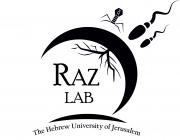Citation:
Abstract:
The objective was to compare the effects of eFSH and deslorelin treatment regimes on ovarian stimulation and embryo production of donor mares in early spring transition. Starting January 30th, mares kept under ambient light were examined by transrectal ultrasonography. When a follicle > or =25 mm was detected, mares were assigned to one of two treatment groups, using a sequential alternating treatment design. In the eFSH group, mares (n=18) were treated twice daily with eFSH (12.5mg im) until they achieved a follicle > or =35 mm; hCG was given 36 h later. In the deslorelin group, mares (n=18) were treated twice daily with deslorelin (63 microg im) until a follicle > or =35 mm was detected, and then they were given hCG. Estrous mares were inseminated with fresh semen. Eight days after ovulation, embryo recovery attempts were performed. In each group, 14/18 (78%) mares ovulated following the eFSH or deslorelin treatment regimes. The mean (95% CI) interval from treatment initiation to ovulation was 8.2d (7.3, 8.9) and 7.2d (6.2, 8.1) in the eFSH and deslorelin groups, respectively. In the eFSH group, the number of ovulations was significantly higher (mean+/-S.E.M.; 3.4+/-0.4 vs. 1.1+/-0.1 ovulations), and more embryos were recovered (2.6+/-0.5 vs. 0.4+/-0.2 embryos/recovery attempt). We concluded that eFSH and deslorelin treatment regimes were equally effective in inducing ovulation in early transitional mares, within a predictable time of treatment; however, the eFSH regime increased the number of ovulations and embryos recovered per mare.

